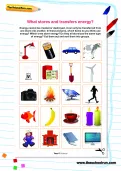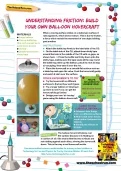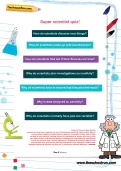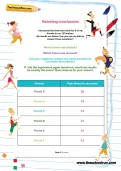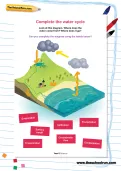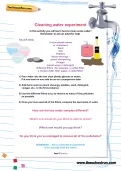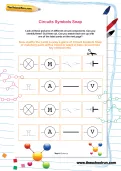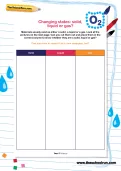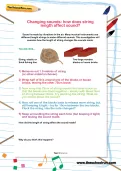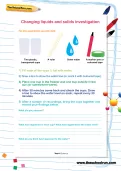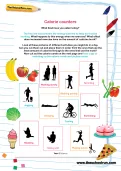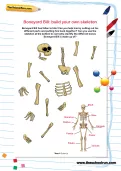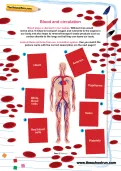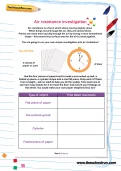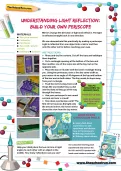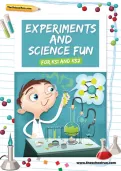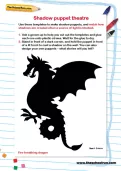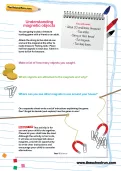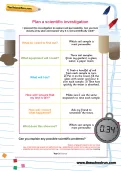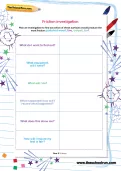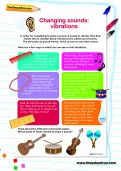Look at this diagram. Where does the water come from? Where does it go? Can you complete the diagram using the labels below?
or
Register to add to your saved resources
Already a subscriber? to view this content.
In this activity you will learn how to clean some water!
or
Register to add to your saved resources
Look at these pictures of different circuit components. Can you identify them? Cut them out. Can you match each one up with one of the label cards on the next page? Now shuffle the cards to play a game of Circuit Symbols Snap or matching pairs with a friend or adult to help revise these key components.
or
Register to add to your saved resources
Already a subscriber? to view this content.
Materials usually exist as either a solid, a liquid or a gas. Look at the pictures on the next page. Can you cut them out and place them in the correct column to show whether they are a solid, liquid or gas?
or
Register to add to your saved resources
Already a subscriber? to view this content.
Sound is made by vibrations in the air. Many musical instruments use different length strings to make different sounds. This investigation will examine how the length of string changes the sounds made.
or
Register to add to your saved resources
Already a subscriber? to view this content.
Complete this investigation about changing liquids and solids and record your observations.
or
Register to add to your saved resources
Already a subscriber? to view this content.
Look at these pictures of different activities you might do in a day. Can you cut them out and place them in order from the ones that use the least amount of calories through to the ones that use the most?
or
Register to add to your saved resources
Already a subscriber? to view this content.
Boneyard Bill has fallen to bits! Can you help him by cutting out his different parts and putting him back together? Can you use the skeleton at the bottom to correctly identify the different bones Boneyard Bill is made up of?
or
Register to add to your saved resources
Already a subscriber? to view this content.
Look at these pictures from our circulation system. Can you match the picture cards with the correct description?
or
Register to add to your saved resources
Already a subscriber? to view this content.
Human adults have up to 32 permanent teeth, which start to emerge when we are about 6 years old. Most people have all their adult teeth (apart from wisdom teeth) in place by the age of 12. Can you label this diagram of the different kinds of teeth?
or
Register to add to your saved resources
Already a subscriber? to view this content.
Air resistance is a force which slows moving objects down. When things move through the air, they are slowed down. Planes can move more quickly through the air by having a more streamlined shape – this means less surface area for the air to resist against. Do you fancy having a go at running your own simple investigation into air resistance?
or
Register to add to your saved resources
Already a subscriber? to view this content.
The Earth has a weak magnetic field caused by the movement of molten iron in its core. The Earth’s magnetic field acts on a magnetised needle, pulling one end towards the north and the other towards the south magnetic pole. Understand more about magnets by making your very own magnetic compass from a polystyrene pizza base, a needle, a pin and a strong magnet.
or
Register to add to your saved resources
Mirrors change the direction of light and reflect it. We can demonstrate this practically by making a periscope. Light is reflected from one object into a mirror and then onto the other mirror before reaching your eyes. Collect your materials and find out for yourself!
or
Register to add to your saved resources
When a moving surface slides on a stationary surface it rubs against it, which slows it down. This is due to friction, a force which resists the movement of one object sliding past another. Understand more about friction with a fantastic practical project: make your own balloon hovercraft!
or
Register to add to your saved resources
Beans, gingerbread men, ice, washing-up bottles and cocoa powder – that's all you need to demonstrate key KS1 and KS2 science concepts to your child at the kitchen table. Packed with simple experiments, fun games (Muffled Chinese Whispers, anyone?) and parent-friendly science explanations, our Experiments and science fun for KS1 and KS2 learning pack is all you need to make primary science come to life for your child.
or
Register to add to your saved resources
Cut out these dragon, fairy and owl shadow puppets to use in storytelling, while also learning about the properties of light and dark when a light source is blocked by an object.
or
Register to add to your saved resources
Fun experiments to help your child learn about magnetism and magnets.
or
Register to add to your saved resources
Already a subscriber? to view this content.
This worksheet encourages children to read through a plan of an investigation and decide where the problems might be.
or
Register to add to your saved resources
Already a subscriber? to view this content.
Help your child to plan an investigation into friction using the grid on this worksheet.
or
Register to add to your saved resources
Already a subscriber? to view this content.
An activity sheet with ideas for things to do at home that demonstrate the connection between sound and vibrations.
or
Register to add to your saved resources
